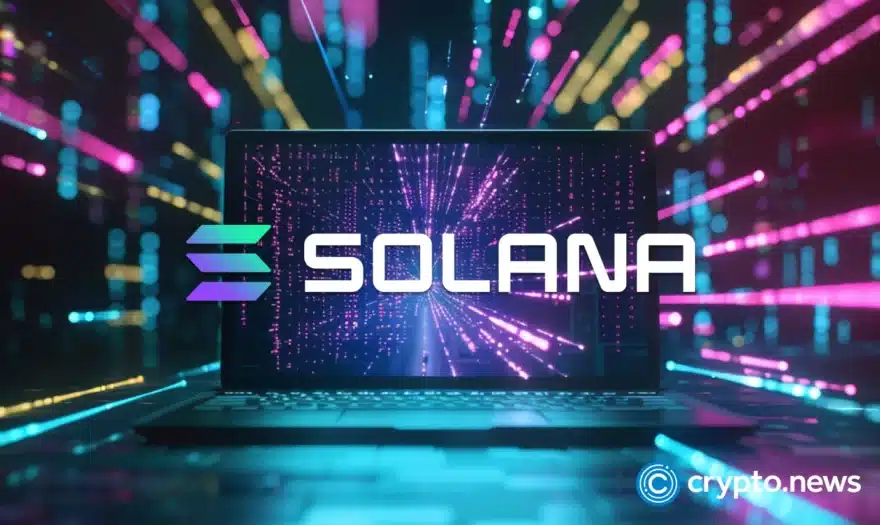What Is Crypto Staking, How Does It Work, and Can You Make a Profit?

Staking cryptocurrency is one of the best ways to get passive income from your investments. Click through to learn why staking crypto is a good idea and how to do it! In addition to trading, staking is a viable way to earn money from crypto investments. But what is crypto staking? How do you do it, and what are the risks of doing so? Read on to find out!
Table of Contents
What Is Crypto Staking?
Crypto staking is a way to generate passive income with your crypto holdings. You do this by “locking” part of your cryptocurrency assets up for a certain period and earning interest on them. Staking is generally available for proof-of-stake (PoS) cryptocurrencies.
Like a fixed deposit at a banks, any crypto coins you stake won’t be accessible for a time. However, some cryptocurrency exchanges may allow you to unstake your coins early. While banks use your deposited money for lending, coins collected in a staking pool are used to validate blockchain transactions.
How Does Crypto Staking Work?
When you stake crypto, your coins work to validate blockchain transactions. The process works like this:
- Staking participants pledge coins for staking.
- The cryptocurrency protocol chooses validators to confirm transaction blocks. Participants with more coins are more likely to become validators.
- Once a block is validated, it’s added to the blockchain, and new coins are minted.
- The newly minted coins are distributed to the validators as staking rewards.
Aside from the initial pledging, staking is a completely passive process on the crypto owner’s part. They must pledge their coins and wait until the required time period passes to get their rewards.
Which Cryptocurrencies Can You Stake?
You can stake a lot of proof-of-stake cryptocurrencies, each providing different return rates. Here are six popular cryptocurrencies you can stake today:
Most of these coins require a minimum investment to become a full validator. For example, Ethereum requires at least 32 ETH. However, many crypto exchanges allow you to join staking pools without spending too much money.
How Do You Stake Cryptocurrency?
To stake cryptocurrency, you need to pledge coins to a staking pool. This guide specifically talks about staking on crypto exchanges so you can stake coins even without making a significant investment.
1. Choose Where To Stake
First, choose a crypto exchange to stake at. Many crypto sites now offer staking, so choose the one that you’re most comfortable with using.
Some prominent crypto exchanges that offer staking are:
- Binance: You can stake over 90 currencies on Binance, ranging from ADA to MATIC.
- Coinbase: Staking on Coinbase allows you to earn daily or weekly payouts on select cryptocurrencies like ETH and DAI.
- Kraken: Staking coins on Kraken comes with weekly rewards like extra coins. Additionally, Kraken lets you unstake anytime.
- Crypto.com: Staking Cronos (CRO) on Crypto.com makes you eligible for benefits like higher interest and cashbacks on your Crypto.com Visa card.
2. Sign Up For The Crypto Exchange
If you haven’t yet, create an account on your chosen crypto exchange. Input your name, email, and other relevant details to create your account.
3. Buy A Proof-Of-Stake Coin
The next step is to buy your crypto coin. Make sure you buy coins that you can stake on the exchange, as not all cryptocurrencies can be staked. While staking limits are generally much lower on exchanges, buying more coins gives you more rewards.
4. Stake Your Coins
Choose a staking period and confirm your choice. Some crypto exchanges offer varying staking periods, ranging from one month to an entire year.
5. Receive Your Earnings
All you need to do now is wait. You’ll get your coins back alongside any staking rewards when the staking period ends.
Benefits Of Staking Cryptocurrency
Staking cryptocurrency is a popular way to make money off your crypto holdings. Here are some benefits you’ll get by staking your coins:
Get Passive Income And Boost Profits
Rewards for staking crypto tend to be high, with some coins offering a 60% annual percentage yield. The best thing about staking is that you don’t have to do anything – you just need to put your coins in the pool and leave them.
If your staked coin grows in value while in the staking pool, you’ll get more coins to sell when you get them back, resulting in even more profits.
Support The Blockchain
Staking puts your coins to work verifying blockchain transactions. By staking, you’re improving the blockchain’s efficiency and ability to withstand cyberattacks. Some crypto projects also give you governance tokens as a reward, allowing you to vote on and influence their future.
Save Money On Equipment
Mining proof-of-work (PoW) currencies like bitcoin requires a lot of expensive hardware and can be more trouble than they’re worth. Staking is much more affordable because you only need coins to enter a staking pool. There’s a much lower barrier to entry–even new investors can stake their coins.
Risks Of Staking Cryptocurrency
While staking may earn you great rewards, there are some risks involved. Here are some things you need to watch out for:
Your Coins Become Illiquid
When you stake, your coins are locked for a certain time, so you can’t do anything with them. However, some crypto exchanges allow you to unstake before your staking period is up, although it may take several days to get your coins back.
The Coin’s Price May Drop
Cryptocurrencies are volatile. If your staked coins drop in value, you can’t sell them quickly and may lose a lot of money. This is an especially likely risk for less popular coins that offer considerably large staking rewards.
Your Coins Could Get Hacked
Cyberattacks may happen if your staking pool operator doesn’t secure it well. If your pool is attacked, you may lose your valuable investments.
When To Stake Crypto
You should stake crypto if you’re planning to hold it for the long run. Instead of letting it sit in your wallet doing nothing, it’s better to put it to work and get some extra income.
However, you should only stake coins that have good long-term prospects. If your coin plummets in value while staked, you can’t sell them quickly to cut your losses.
Conclusion
Staking cryptocurrencies allows you to earn passive income by “lending” your coins to validate proof-of-stake transactions. While your coins are locked up during the staking period, you’ll gain interest and receive more coins when the staking period ends.
However, staking crypto bears some risks, like your coins dropping in value while they’re being staked. Make sure to do your research and only stake coins with great long-term potential.
FAQs
Where can I stake cryptocurrencies?
You can stake cryptocurrencies on major crypto exchanges like Binance, Kraken, Crypto.com, and Coinbase.
Which cryptocurrency should I stake?
You should stake cryptocurrencies that have strong long-term growth potential and are less likely to devalue over time.















